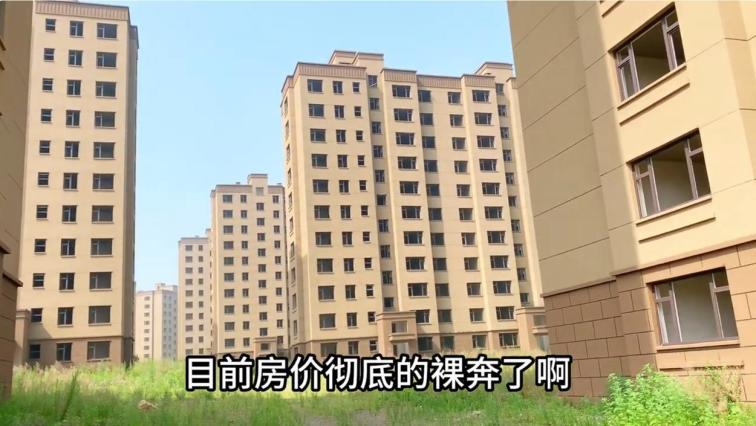Recently, heavy rainfall in Beijing led to a severe flood disaster. In one tragic case, 31 people died at a nursing home in Miyun District. A photo from the scene shows what appear to be muddy handprints on the walls—possibly the desperate final attempts of the elderly to survive. (Image via web)
[People News] This year’s torrential rains in Beijing caused major disasters. According to official reports, 44 people died and 9 remain missing, with over 300,000 people affected. While some experts have tried to downplay the situation by blaming it on “extreme weather,” the key questions remain: what human errors contributed to the tragedy, and where did the government fail in its responsibilities? Li Ting, a postdoctoral researcher in meteorology at the Chinese Academy of Sciences (CAS), a former employee at its Institute of Atmospheric Physics, and a member of the China Association of Popular Science Writers and the Chinese Meteorological Science Committee, provided a professional analysis through her media channel. She revealed the man-made causes behind the discharge of water from Miyun Reservoir.
From 8:00 a.m. on July 23 to 11:00 a.m. on July 29, the rain lasted 7 days and 147 hours—nearly 40% of Beijing’s annual rainfall fell in this short span. The heaviest rain hit the northern mountainous regions, including Miyun, Huairou, Pinggu, and Yanqing. Although the official death toll is 44 with 9 missing, many disaster survivors believe the real number is much higher. Online reports claim that over a hundred bodies have been recovered from floodwaters.
The Truth About Miyun Reservoir’s Flood Discharge
While Beijing's meteorological bureau explained the rainfall in technical terms, the public wanted to know something more urgent: what actions did the government take before the disaster struck?
Li Ting, now based in Japan, said via her media platform: "Extreme weather is a natural disaster. But if the government responds poorly, it becomes a man-made disaster."
Some argue that it’s unfair to blame the government since extreme weather is hard to predict. Li Ting agreed that forecasting such events is technically challenging—but made an important distinction:
"People must understand the difference between forecasting and warning. A forecast is a prediction of future weather, like saying it will rain tomorrow. It’s difficult. A warning, however, is issued when a disaster has already begun to form—like when rain has started, and radar shows alarming patterns, but it hasn’t yet become a full-blown storm. At that point, officials can issue immediate warnings to help people avoid danger, especially those in low-lying or mountainous areas. It’s about acting quickly to buy time for evacuation and survival."
Li emphasised that the government had the ability and the duty to issue warnings. The real failure in this disaster was how poorly the government handled flood warnings before discharging water from Miyun Reservoir.
According to the Beijing Daily, at around 3 a.m. on July 27, Miyun Reservoir saw the highest inflow rate since its construction in 1959—6,550 cubic meters per second. Under Beijing’s unified flood control plan, the reservoir began discharging water downstream.
At 3 p.m. on July 27, with a command to “open the gate,” the third spillway was opened and floodwaters surged out, flowing through Miyun, Huairou, Shunyi, and Tongzhou, heading toward the lower reaches of the Chaobai River.
However, Li Ting noted that the flood discharge began at 3 p.m., but the notice was only issued at 2:27 p.m.—and only posted on the Water Authority’s official website.
Even worse, a Level-1 flood emergency response wasn’t activated until 6 p.m.—three hours after the discharge had begun. "Many high-risk areas were already flooded before residents even received the alert," Li said. "Evacuation wasn’t completed until the 28th in some places."
Many Miyun residents told foreign media they received no warning. They woke up to water already at knee level. One villager said the flood came crashing down from the mountains, and over 300 people in the village had not been evacuated—they were now missing.
The Tragedy at Miyun Nursing Home: 31 Deaths
In the early hours of July 28, Taishitun Zhengyang Elderly Care Centre in Miyun was surrounded by floodwaters. Staff called for help. The official news claimed that 48 people were rescued. "But they only reported how many were rescued, not how many weren’t," said Li Ting.
Southern Weekly journalists investigated and found public records indicating that the nursing home had 80 beds and housed over 70 elderly residents. There were 8 staff members, and 55 of the 69 elderly residents were fully or partially paralysed. The official death toll: 31.
Caixin reported that after the flood receded, reporters entered the nursing home and found water levels had reached over 2 meters, even surpassing the height of wardrobes. On the walls were muddy handprints, clear evidence of the victims’ desperate final struggle.
The surviving elderly residents were mostly those who could walk. They managed to stand on windowsills or chairs to avoid the rising waters. But those with limited mobility perished.
Miyun District Party Secretary Yu Weiguo admitted that the town centre where the nursing home is located had long been considered "safe," and thus was not included in the emergency evacuation plan.
Li Ting disagreed: “It’s not just the downstream that needs protection during flood discharge. The entire flood risk zone must be safeguarded—including the reservoir area, upstream rivers, embankments, and tributaries. Once discharge begins, water levels rise rapidly, and currents accelerate. Even upstream and side areas can be hit hard by backflow, overflow, and secondary flooding. These areas must be included in early warnings, evacuation, and protection plans."
"Since the government established a water authority with many professionals and administrative resources, it should use a scientific, responsible approach to develop effective plans and fulfil its duties."
Some have blamed the nursing home staff for failing to evacuate residents in time.
Li Ting responded: “Yes, staff hold some responsibility. But facilities like nursing homes and kindergartens are home to people who cannot evacuate themselves—the elderly, children, and the sick. If no one comes to help, they have no choice but to stay put. Relying on a single manager or staff member to make evacuation decisions is a dangerous mismatch of responsibility and authority.”
More importantly, she said, the government’s late announcement of the flood discharge made rescue efforts nearly impossible. The nursing home likely didn’t even have enough manpower to carry out a full evacuation.
“For mountainous villages and communities with many left-behind elderly and children—for vulnerable groups like the elderly, sick, and disabled—the government has a duty to develop specialised emergency and rescue plans. These plans must be implemented before any discharge begins."
Li Ting warned that since 1960, extreme weather events in China have increased overall, and since 2000, the increase has become more dramatic. With global warming continuing, these disasters will only grow more frequent and more destructive. “We must learn and prepare for safety,” she said. “But more importantly, the government must improve its early-warning systems and rescue capabilities.”
“Climate change won’t wait for us to be ready. Weather disasters won’t pause just because governments try to shift the blame.”











News magazine bootstrap themes!
I like this themes, fast loading and look profesional
Thank you Carlos!
You're welcome!
Please support me with give positive rating!
Yes Sure!